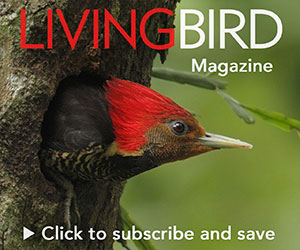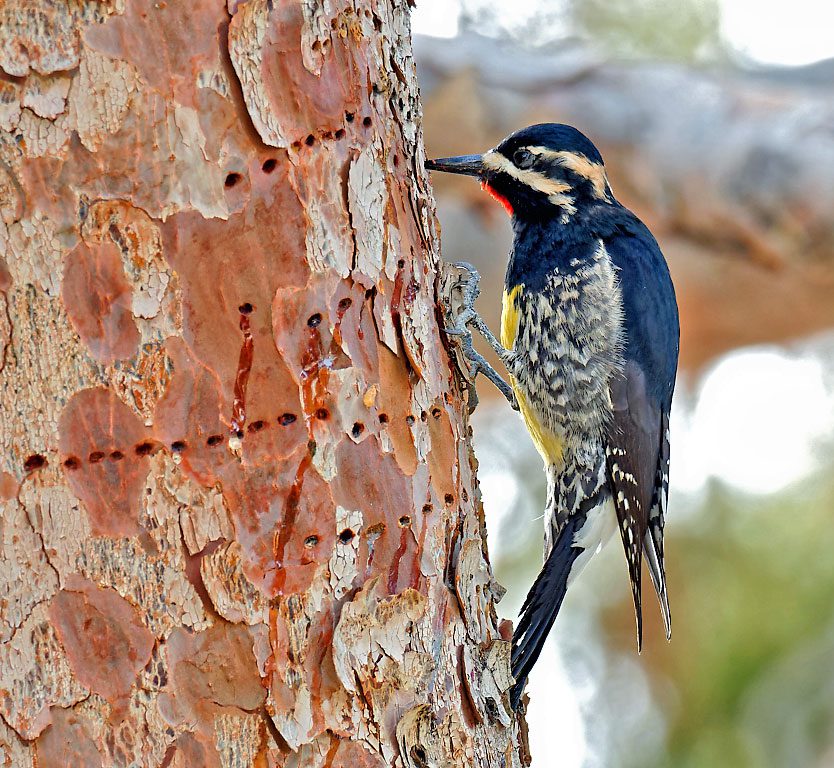How Did Birds Again Get Its Name
From the Summer 2021 consequence of Living Bird mag. Subscribe now.
On the vexing issue of birds named after people in history, the esteemed Kenn Kaufman—author of the Kaufman Field Guide to Birds of North America—broke it down with an example of birding with Black friends in Georgia.
"[If] we run across a Bachman's Sparrow, nosotros're all aware of the fact that John Bachman wrote some really ugly things in support of white supremacy," Kaufman said. "That bird used to be called Pine-wood Sparrow … Why not but change information technology dorsum?"
Kaufman was speaking at a virtual panel discussion on April 16 about the prospect of changing eponymous common names for birds (or birds named subsequently people). The Customs Congress on English Bird Names was hosted by the American Ornithological Lodge's Diversity and Inclusion Committee via Zoom, and attracted nearly 600 viewers. The unanimous sentiment among the 15-person panel—which featured birders, scientists, field guide authors, and other experts from the U.Southward. and Canada—was that changes need to be made among more than 100 eponymous bird names for North American species to make birding more welcoming and inclusive to all.
But how much change, and how fast? As some scientists on the console cautioned, any name changes demand to be conducted in an orderly mode to avoid impacts to scientific discipline and conservation. Put simply, the landmark Science enquiry showing that North America has lost 3 billion birds since 1970 wouldn't take been possible if all the information sources couldn't rely on a unified, comparable set of bird names.
One bird's name change in the summertime of 2020 perhaps paved the way for balancing inclusivity and society, when the AOS North American Classification Committee appear that the former McCown's Longspur would henceforth exist known as the Thick-billed Longspur. John McCown first collected the species for science in 1851, simply subsequently chose to join the Confederate Army during the Ceremonious State of war. The modify was fabricated subsequently birders campaigned to remove McCown's name from the bird, and later the classification commission revised its guidelines for bird names—adding considerations for "present-day ethical principles" when considering irresolute English mutual bird names that create "ongoing impairment."
The longspur'south renaming kicked off a larger dialogue inside the birding community nigh changing other eponymous bird names with ties to racism. A grassroots movement called Bird Names for Birds formed to push the issue even farther, calling for changing all eponymous bird names. Jordan Rutter, one of the group's founders, also spoke at the panel event.

"Eponymous names don't reflect the welcoming and inclusive community nosotros know birding can be," Rutter said. She said that she believes the current system for determining common bird names reflects colonialism in ornithological history. Nearly every Due north American bird proper noun tied to a person tin be traced back to a white American or European naturalist.
"Every eponymous common name needs to go," Rutter said. "We know that won't happen rapidly. And to be washed right, it shouldn't happen quickly … but it needs to happen."
Rutter said she thinks a process for changing eponymous bird names could be a rallying moment for birders: "We have an incredible opportunity ahead of united states that could truly unite every bird customs fellow member. … What if we could inspire the next generation and create a ripple effect of people who care about birds?"

During the panel word, at that place was broad consensus that bird names should be changed to remove eponyms. Someday soon, the Williamson'due south Sapsucker may exist known by a different name, mayhap the "Montane" Sapsucker, as panelist Kenn Kaufman suggested. Photo by Pierre Deviche/Macaulay Library.
Marshall Iliff, a projection leader with the Cornell Lab of Ornithology'south eBird database, which contains millions of birder checklists for 10,518 species worldwide, acknowledged the touch that Bird Names for Birds has already had.
"Eponyms are part of every bird proper noun word going on these days," said Iliff. "I run across that as a testament to how strongly those arguments have resonated."
Iliff went on to speak most the need to move deliberately and constructively in changing bird names, and including an array of voices: "It's really, really important that changes are fabricated along a broad coalition and consensus inside the Americas and across. … In the stop, nosotros really promise to see true global agreement on the names and taxonomy for all species of birds, so that field guides, national and international databases, and names used by scientists and recreational birders worldwide are consistent."
David Sibley joined Kaufman on the panel equally another author of a acknowledged field guide series. And according to Sibley—who credited the Bird Names for Birds movement as opening his eyes to the issue—eponymous names aren't just a barrier to making birding more inclusive. They're a bulwark to the complimentary catamenia of information.
"As I've learned more about eponymous bird names over the last year, it's become articulate that these names carry a lot of baggage," Sibley said. "If we cringe a little bit when we say or hear a bird's name, that'due south a barrier to communication. … Information technology'south unlike from the free and uncomplicated period of data that we tin can take when nosotros talk most the Surf Scoter, or Warbling Vireo or Yellow Warbler."
Sibley said that implementing a raft of name changes in field guides and other birding references will crave a lot of time and adjustment, only information technology's eminently achievable: "The hardest role will probably exist convincing the birding community that this is worth the trouble. Education volition be key to that. It's a small pace in the big landscape of racial and social injustice, merely I think it's important and definitely worth doing."
Yousif Attia, a citizen scientific discipline coordinator at Bird Studies Canada, called for a process of reconsidering eponymous birds names that includes "diverse stakeholders informed on inclusion and disinterestedness, in add-on to taxonomy and life history birds." Many of the panelists spoke about a gilt opportunity to augment the base of popular support for birds, which could ultimately do good the birds themselves.
"Birding and ornithology … needs to aggrandize beyond our current audience," said Geoff LeBaron, who manages the Christmas Bird Count database for Audubon. "The hereafter of conservation really depends on engaging other audiences."
With iii billion birds lost and more advocates for birds needed, a broad initiative to rename hundreds of birds could "appoint a massive and diverse customs of enthusiasts," said eBird'due south Iliff. He spoke of the chance to "dig into the essence of each species, to appreciate information technology even more deeply and define inspired and appropriate names."
In nodding back to Kaufman's comments about discomfort with the name Bachman's Sparrow, and Rutter's comments about renaming being a risk to rally birders, Iliff asked people to imagine "the notion of a campaign for Pine-forest Sparrow and getting anybody excited well-nigh that bird."
Getting people excited almost birds should be the foremost conservation priority, said American Birding Association President Jeff Gordon.
"The biggest threat birds face isn't glass collisions or outdoor cats or even global warming, as dire as those threats are," said Gordon. "It's being ignored to death. Not enough people know, and not plenty people intendance."
Source: https://www.allaboutbirds.org/news/toward-inclusivity-in-birding-forum-discusses-renaming-eponymous-birds/
0 Response to "How Did Birds Again Get Its Name"
Post a Comment